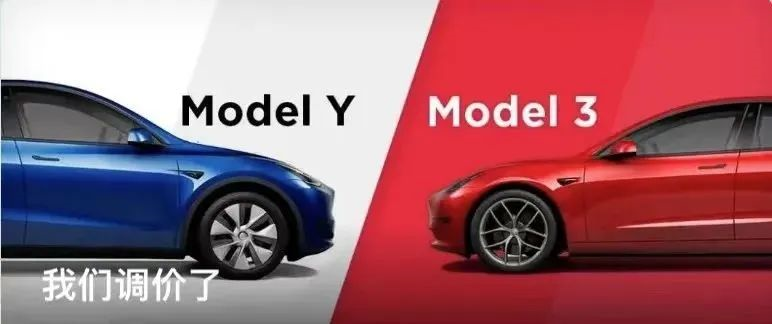Author: Rezz, Michelin
Recently, there is a joke spreading online that, due to the price reduction, a Tesla owner brought a friend to help fight for their rights, but the friend couldn’t resist the temptation of the New Year’s price reduction and ended up buying a Tesla on a whim…

At the beginning of the new year, Tesla’s comprehensive price reduction has brought a wave of “New Year’s gifts” to Chinese consumers. In fact, this is Tesla’s fifth price reduction or “subsidy” in more than two months, and this time the “shark” has once again stirred up the already fiercely competitive Chinese automotive market.
Along with Tesla’s price reduction, the new energy vehicle purchase subsidy, which has lasted for 13 years, has officially exited the market. With the dual disruption of policy and Tesla’s “shark” tactics, the recent automotive market has been quite lively: on one hand, new energy vehicle companies have resorted to various price-cutting measures, while on the other hand, traditional luxury car brands have made both overt and covert price adjustments. What is most unexpected is that BYD, the “big winner” of 2022, has also unconsciously lowered its prices and joined this price war.
What is the reason that makes both “easy-selling” and “difficult-to-sell” companies start a price war? With curiosity, I visited some 4S stores and city showrooms of various companies and experienced firsthand the tactics used in response to the price war.
BYD and Tesla each take their “Yang Guan Path”
When it comes to new energy vehicles, Tesla and BYD are definitely the two that cause ripples throughout the industry.
Tesla took the lead in starting the price war, lowering the threshold for the Model 3 to an unprecedented 229,900 yuan. As the saying goes, “the early bird catches the worm”, and the attention and conversion rate brought by the price reduction were also quite high-profile. According to official data, Tesla received orders for 30,000 cars within three days after announcing the price reduction. In January 2023, when the overall sales of the new energy vehicle market decreased by 49.9% on a month-on-month basis, Tesla achieved 10.3% growth thanks to the price reduction.
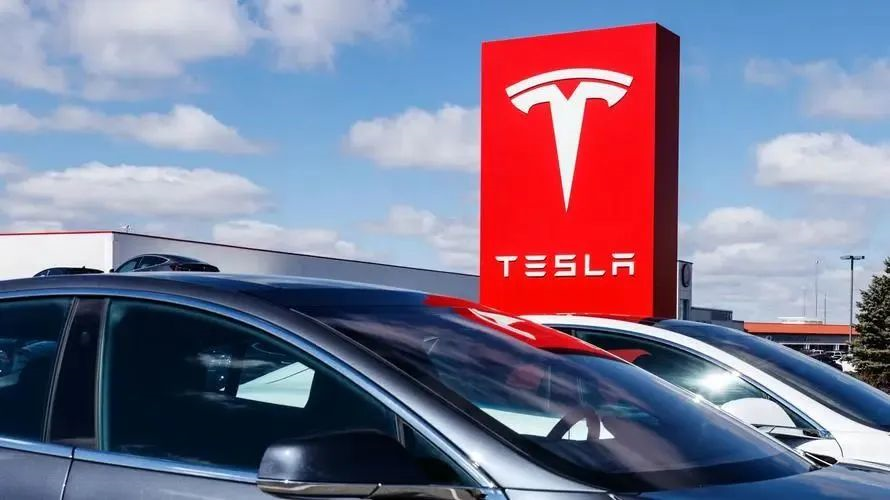 If Tesla, which is known as the “neurosurgical knife” in the auto industry, raises or lowers its prices, it’s within expectation, but BYD’s pricing strategy is unexpected. With last year’s impressive performance, BYD confidently announced a price increase of 2000-6000 yuan for all models from Jan 1st, making it the first domestic automaker to announce a price hike in response to the ending of government subsidies.
If Tesla, which is known as the “neurosurgical knife” in the auto industry, raises or lowers its prices, it’s within expectation, but BYD’s pricing strategy is unexpected. With last year’s impressive performance, BYD confidently announced a price increase of 2000-6000 yuan for all models from Jan 1st, making it the first domestic automaker to announce a price hike in response to the ending of government subsidies.
From the information that this editor has learned from BYD’s 4S shops, neither the Dynasty nor the Yuanjing series have showed any signs of price reduction, and essentially all models have no discounts. In addition to decoration discounts, the Dynasty series has a replacement subsidy of 4000-5000 yuan, while the Yuanjing series has a replacement subsidy of 2,000-5000 yuan. However, compared to last year’s shortage of cars, with the channel expansion of the Yuanjing series, dealerships can currently ensure the availability of 1-2 popular models in stock, with waiting times for new cars of about two months.
Although the selling models have tightened their prices, new cars have “honest bodies”: the Qin Plus DM-i Championship Edition was released on February 10th, with a starting price of 99,800 yuan. This is the first time that the DM-i model has been priced below 100,000 yuan, putting considerable pressure on joint venture A-level cars that usually dominate the 100,000 yuan range and being called the A-level car killer.
In psychology, there is a term called “anchoring effect”, in which information received first affects people’s decision-making like an anchor sunk into the sea. Many people may not specifically remember this term, but it doesn’t prevent it from appearing in everyone’s life. For example, Tesla and BYD in the automotive market.
Perhaps many users did not ultimately choose to purchase the Model 3/Y, but it doesn’t prevent subconscious comparisons between Model 3/Y and other car prices and configurations, and many B-level cars launched last year took aim at Model 3/Y. This has led to a change in the position of the “anchor” as Tesla continues to lower its prices, and products aimed at the “anchor” in the market are obliged to take part in the price reduction wave.
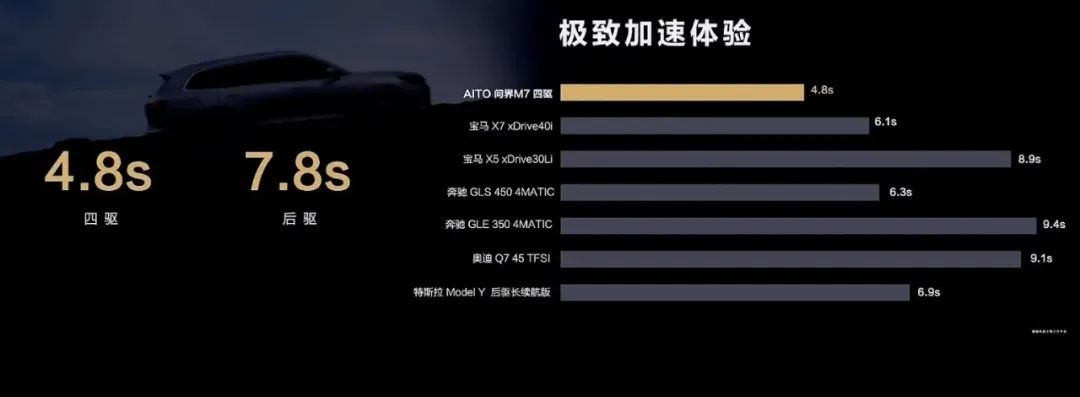
In this case, models like the Ideal L9, which are far from Tesla in terms of positioning, price, and space, have escaped the price war in the short term.
If Model 3/Y is the “anchor” of pure electric B-class cars, then BYD is the “anchor” of joint venture brand A-class entry-level cars. With the threshold price of Qin Plus DM-i champion edition lowered to below 100,000 yuan, the market that was once harvested by A-class cars of joint venture brands in the 100,000 yuan range is now threatened, especially when Japanese joint venture brands, which focus on fuel economy, encounter hybrid DM-i. The price war, originally in the new energy vehicle circle, has also extended to the fuel vehicle field. We can see various price reduction measures in the entire industry.
New Car Manufacturers’ “Various Price-reducing” Strategies
Compared with Tesla and BYD, the price-reducing strategies of new forces and independent brands are varied. Some brands followed up at the first time, while others claimed no reduction but honestly took various disguised methods.
Under investigation, Aiways is the only brand that has not officially raised its prices. According to previous reports, Aiways will raise its prices in early March, with an overall increase ranging from 3000 to 6000 yuan. Before the price increase, all models of Aiways currently have discounts, with discounts ranging from 3000 to 5000 yuan.
During the survey, we found that Aiways’ shop sold models including AION S, AION S Plus, AION Y, AION V, with discounts of 3000 yuan and a replacement subsidy of 10,000 yuan. The discount amount for AION LX is 5,000 yuan, and the replacement subsidy is 15,000 yuan. In addition, all models can enjoy a three-year interest-free loan of 100,000 yuan.
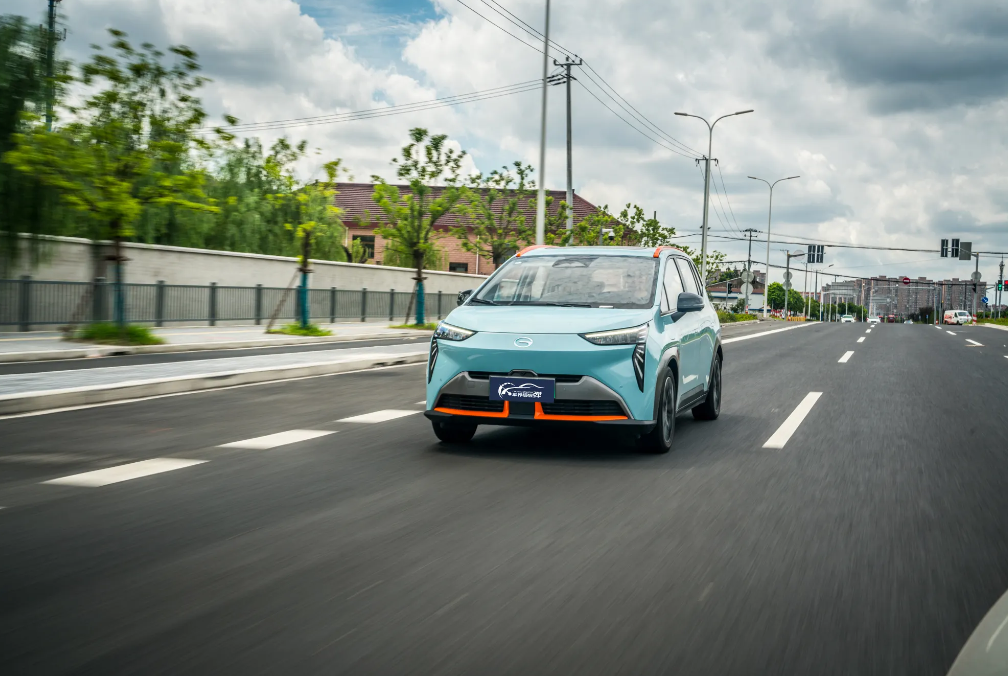
Perhaps influenced by sales performance, XPeng was the first brand among “XPeng Li”, among the three brands, to cut prices. The cars available for sale in the franchise stores surveyed are G3i, P5 and P7, with price reductions ranging from 20,000 to 36,000 yuan. In contrast, NIO is more euphemistic, with a small number of display cars and stock vehicles enjoying exhibition vehicle policies in the NT1.0 platform, “reducing prices by clearing inventory.” Leapmotor “reduces prices” through deposit offset. For example, based on Leapmotor C01, the highest 5,000 yuan deposit can be offset by 30,000 yuan, which is equivalent to a 25,000 yuan discount.
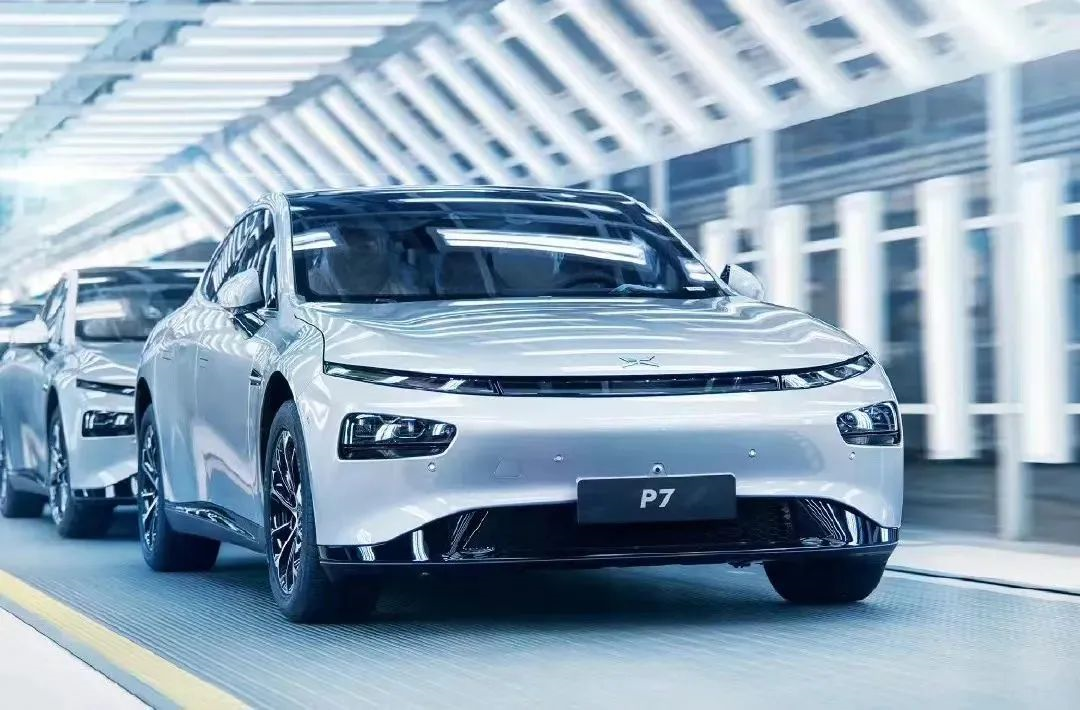
Compared with the proactive price cuts of independent brands such as Wanjie and FEIFAN, the price cuts of joint venture brand electric vehicles seem more like compromises made for sales volume.
As the “good student” of joint venture brand electric vehicles, the ID. family delivered a total of 143,100 units throughout the year, a year-on-year increase of 102.9%. Perhaps it was the sales volume that gave it confidence. The Volkswagen ID. series immediately raised its prices after the national subsidy ended, with an increase of 6,600 yuan. However, the official price increase does not affect the discounts offered by dealerships. Currently, the discount for both the ID.4 CROZZ and ID.6 CROZZ visited by the author is 10,000 yuan, and the replacement subsidies are 14,000 yuan and 16,000 yuan, respectively. In addition, the manufacturer also provides a 50% down payment, a two-year interest-free loan, and a 5,000 yuan insurance.
Other joint venture brand electric vehicles have not had such a good time as ID. Toyota bZ4X announced a price cut of 30,000 yuan at the beginning of the month, launching the “first shot” of official price cuts for joint venture brand electric vehicles; FAW Toyota and Dongfeng Nissan quickly followed suit, with news of a time-limited discount of 60,000 yuan.
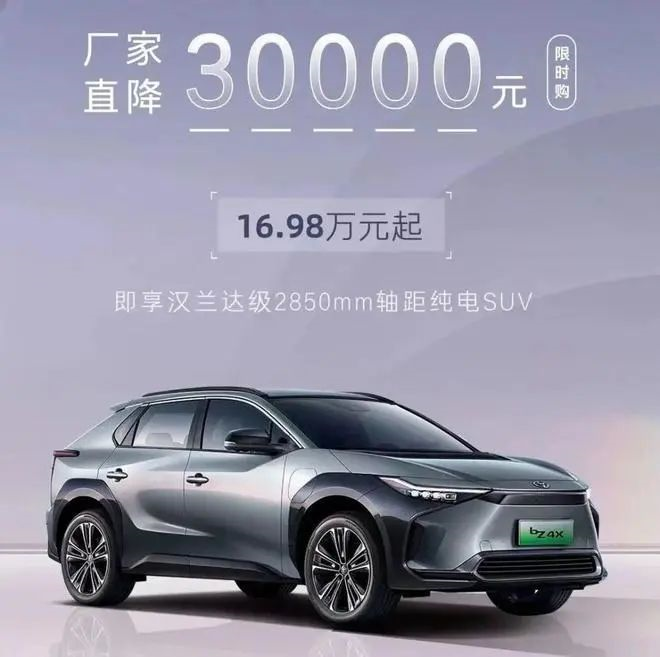 For these luxury brands, regardless of whether their competitors are reducing prices, their current sales volume also forces them to make concessions on prices. After all, whether they reduce prices or not, the sales volume is still there.
For these luxury brands, regardless of whether their competitors are reducing prices, their current sales volume also forces them to make concessions on prices. After all, whether they reduce prices or not, the sales volume is still there.
Luxury Brands Brave the Sword of “Self-inflicted Wounds”
If “price reduction” is the keynote of the auto market at the beginning of 2023, then BMW is definitely a “maverick”.
On February 1st, BMW officially announced a comprehensive price increase, ranging from 2,000 to 20,000 yuan. The suggested retail prices of the two mainstream electric vehicles, i3 and iX3, increased by 4,000 yuan and 5,100 yuan respectively, which also raised the suggested price of i3 to 353,900 yuan. Against the current market situation, it is most likely due to the impact of upstream cost increases, resulting in an increase in the production cost of whole vehicles at the factory end. However, the pressure naturally falls on the dealerships next.
Although the official suggested starting price for the BMW i3 has increased to 3,539,000 yuan after the price increase, i3 and iX3 still maintain a relatively large discount at the dealership. Among the 4S stores we visited, the lowest-priced i3 after the discount could reach around 250,000 yuan, while iX3’s discount is slightly less and can also be priced at over 300,000 yuan. In fact, since the end of last year until now, the discounts for BMW i3 and iX3 have been around 30% off.
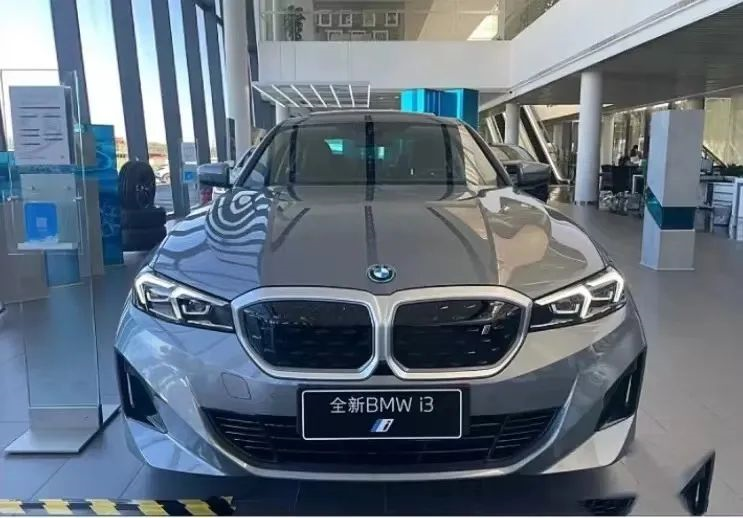
In fact, BMW’s generous discounts on electric vehicles have indeed brought a certain boost in sales. In the just past January, with the entire auto market slump, the sales of i3 and iX3 both exceeded 3,000 units, and it is difficult to say that discount pricing was not a factor. It’s just as the saying goes, there is no car that cannot be sold, only a price that cannot be sold.
Compared with BMW’s “visible rise and hidden descent,” its rival Mercedes is more “confident.” In November of last year, Mercedes officially made price adjustments for its EQ model series, including a price reduction of up to 237,600 yuan for EQS, which also reduced its price from the “million-dollar electric car” position to the starting price of 845,000 yuan.
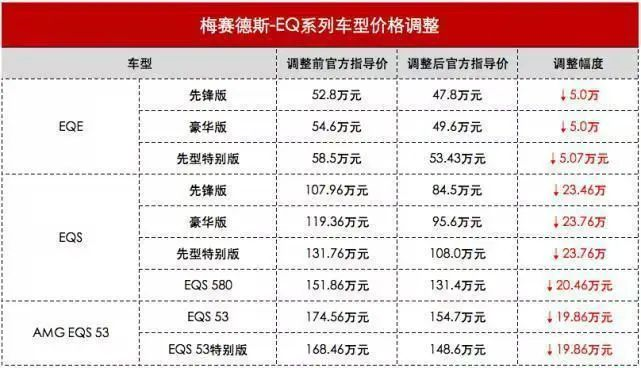 However, the official price reduction has not been able to save the discounts of 4S stores. Related dealers told GeekCar that after the official price reduction, the current EQS can still provide a discount of about 20%, with a discounted price of about 680,000 yuan; EQE can also provide a discount of about 60,000 yuan.
However, the official price reduction has not been able to save the discounts of 4S stores. Related dealers told GeekCar that after the official price reduction, the current EQS can still provide a discount of about 20%, with a discounted price of about 680,000 yuan; EQE can also provide a discount of about 60,000 yuan.
For luxury brands like Mercedes-Benz and BMW, “self-chopping” to exchange price for quantity is a choice in the passive situation of the pure electric vehicle market today. After all, to keep up with electrification before the next generation of pure electric vehicle models arrive, we need to persist on the electrification road to use new platforms and technologies to fight. However, with the escalation of price wars, how luxury brands can maintain the “luxury brand premium” on electric vehicles seems to be a new challenge.
“Price Reduction Wave” Strikes, Are Car Companies Urgent?
If we go back a year ago, we can see two opposite situations: at the beginning of 2022, with a series of reasons such as chip shortage, lithium-ion price increases, and capacity tightening, new energy vehicles ushered in a wave of price increases. Users had a hard time finding a car with money, and waiting for a few months was a common situation; in 2023, the position between buying and selling cars, which is the supply-demand relationship, has turned upside down.
According to the author’s statistics, more than 20 automobile companies have announced price adjustments since entering 2023. Whether it is a price reduction wave or a big melee, “price reduction” is an unavoidable trend in the 2023 new energy market, and even in the automobile market.
In terms of demand, with the end of the New Energy Purchase Tax Subsidy, which lasted for 13 years, on the last day of 2022, new energy vehicles have already gotten rid of the situation of relying on national subsidies. However, for consumers, the disappearance of real subsidies will inevitably affect the purchasing decisions of many people. The beautiful results of various auto companies at the end of 2022 overdrawn the sales volume of the first half of 2023. Only the consumers who buy vehicles know this. This kind of overdraft can be reflected from the sales volume of January. In January 2023, the sales volume of the new energy vehicle market was 408,000, a month-on-month decrease of 49.9% and a year-on-year decrease of 6.3%.If the cancellation of national subsidies for new energy vehicles is just temporary for the boost in sales, then another long-term reality is that the growth rate of China’s new energy vehicle market, which has experienced a surge of 90% or even 100%, is unlikely to be replicated in the near future. In 2022 that has just passed, the sales of new energy vehicles in China reached 6.887 million units, a year-on-year increase of 93.4%; while the optimistic forecast given by institutions for 2023 is a growth of 30% with sales reaching 9 million units annually.
After experiencing years of rapid growth in which the industry doubled year after year, the momentum is bound to slow down. However, judging from the investment made by various automakers on product and capacity in recent years, the expected turning point may not come so quickly.
While the growth of demand is slowing down, the growth of production cannot stop like turning off a tap. According to statistics from the China Passenger Car Association, the inventory coefficient of domestic auto dealers had exceeded the warning line, reaching 1.8 in January 2023.
In the past few years, China’s new energy vehicle production capacity has experienced a considerable expansion. According to the author’s incomplete statistics, the newly added and planned production capacity in China from 2021 to now has exceeded 2.8 million units per year, almost all of which are new energy vehicle production lines. Familiar names such as Tesla, NIO, Li Auto, and XPeng have also optimized their production lines and put new factories into operation last year, all aiming to cope with the market growth rate of “100% annual growth”. However, these production capacities will soon face the situation of oversupply.
The inertia effect brought by the huge industrial chain of the automotive industry has also led to a period of embarrassment of oversupply and inventory digesting after market demand declines. Currently, the solution provided by automakers is: a price war.
Of course, the one of the “bottom line” supporting automakers to launch a price war may be the decrease of the overall cost of vehicle production. In addition to reducing production costs through scale expansion, power batteries, which saw a skyrocketing price increase last year, accounting for one-third of the overall vehicle cost, have recently seen a decline in price.原文:
碳酸锂从 2021 年底开始直线上涨,一度飙升到近 60 万元 / 吨。翻了三倍的价格除了让整车厂拍大腿外,也让消费者买车的价格一涨再涨。如今碳酸锂已经从去年 12 月开始连续 3 个月下跌,前不久宁德时代传出「锂矿返利」计划:目标客户承诺未来三年采购宁德时代动力电池不低于 80%,其中 50% 电池都碳酸锂价格以 20 万 / 吨结算,合作将从今年三季度开始。
尽管宁德时代还没有正式回应传闻,但是碳酸锂以及动力电池价格下降的大势所趋似乎难以避免了。这也给新能源汽车提供了降价的空间。
## 最后:有规模,才能有未来
去年我们提到智能电动车的主题是「内卷」,配置上、功能上五花八门的内卷和堆料,让大家能够以更低的价格门槛体验到智能化、电动化的配置;到了今年,这种竞争更加直接和实际,让消费者以更低的价格门槛体验到车。
如果可以选择,也许每家车企都不希望主动开始这种价格战,但现实就是「战火」已经开始。像特斯拉、比亚迪这样的头牌兵,通过先声夺人的价格调整吸引了主要关注,也收获了降价后的成交转化率,短期内实现了以价换量的目标;后来者要面对的是更加激烈的价格战。
未来一年的汽车行业,是产品力与价格的双重比拼,这意味着是研发、产品实力与品牌血槽厚度的比拼。以价换量,以短期的「失血」穿越低谷期,才能在等来春天。对于那些尚处年轻、初出茅庐、血槽有限的新・新们造车来说,造车已经从「困难模式」升级到「地狱模式」了。
当然,对于在今年有买车计划的消费者来说,未必不是「等等党」的胜利呢?
* 文中提到的优惠价格、折扣、落地价格,均来自于笔者走访北京区域部分门店,不具备全国区域和门店的参考意义。
结果:
Lithium carbonate has soared in a straight line since the end of 2021, reaching nearly 600,000 yuan/ton at one point. The tripling of prices not only caused the entire car plant to slap their thighs but also resulted in the price of vehicles rising again and again for consumers. Nowadays, lithium carbonate has been falling for three consecutive months since December of last year. Recently, CATL’s lithium mine rebate plan was announced: target customers who promise to purchase CATL's power batteries for the next three years no less than 80%, of which 50% of the batteries will be settled at a price of 200,000 yuan/ton for lithium carbonate, and the cooperation will begin in the third quarter of this year.
Although CATL has not officially responded to the rumors, it seems difficult to avoid the trend of declining lithium carbonate and power battery prices. This also provides space for reducing the price of new energy vehicles.
## Finally: There will be no future without scale
Last year, we mentioned that the theme of smart electric vehicles was "internal circulation." Various configurations on the equipment and function were circulated and piled up to allow everyone to experience intelligent and electrification configurations at a lower price threshold. This year, this competition has become more direct and practical, allowing consumers to experience the car at an even lower price point.
Perhaps every car company does not want to initiate this price war, but the reality is that the "battlefield" has already begun. Leading companies such as Tesla and BYD have attracted significant attention with their proactive price adjustments, and have also achieved conversion rates after price reductions, achieving their goal of trading volume for price in the short term. Latecomers will face even more fierce price wars.
The automotive industry in the next year will be a dual competition in product strength and price, which means that it is a competition of R&D, product strength, and brand strength. Only by obtaining volume with price and by short-term "loss of blood" through low valleys can spring be awaited. For those new automakers who are still young, inexperienced, and have limited brand strength, car-making has already changed from "difficult mode" to "hell mode."
Of course, for consumers with plans to buy a car this year, it may not be a victory for the "wait and see party"?
* The preferential prices, discounts, and landing prices mentioned in the text are based on the author's visits to some stores in the Beijing area and do not have a reference value for the national region and stores.
This article is a translation by ChatGPT of a Chinese report from 42HOW. If you have any questions about it, please email bd@42how.com.
